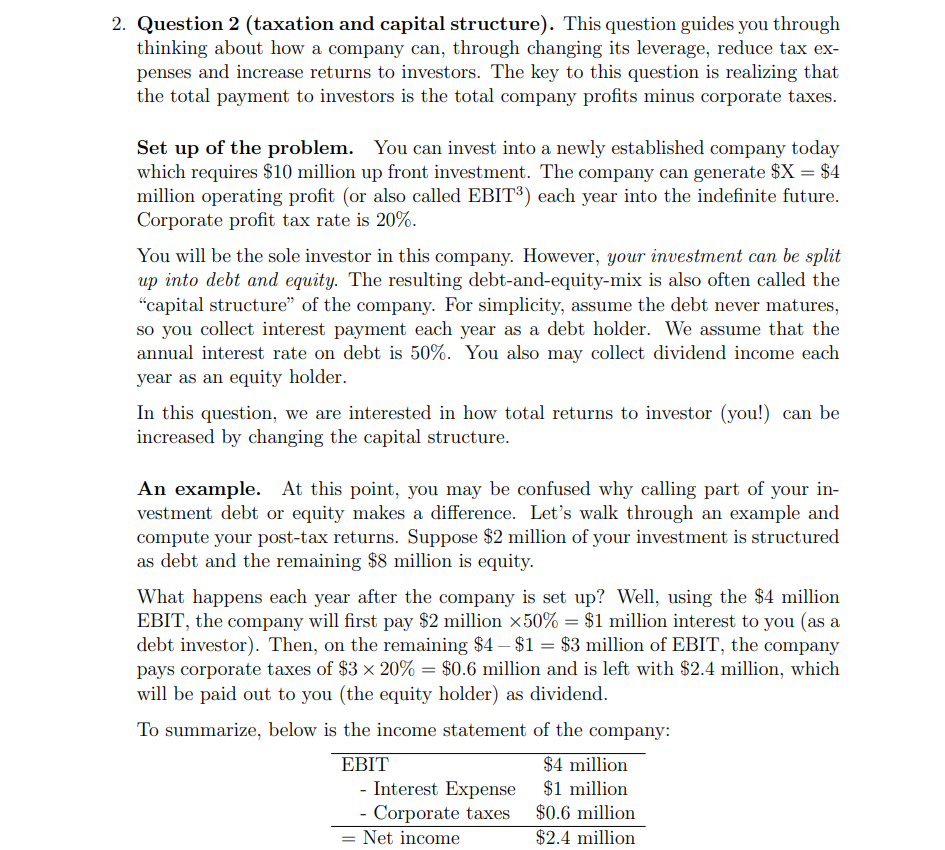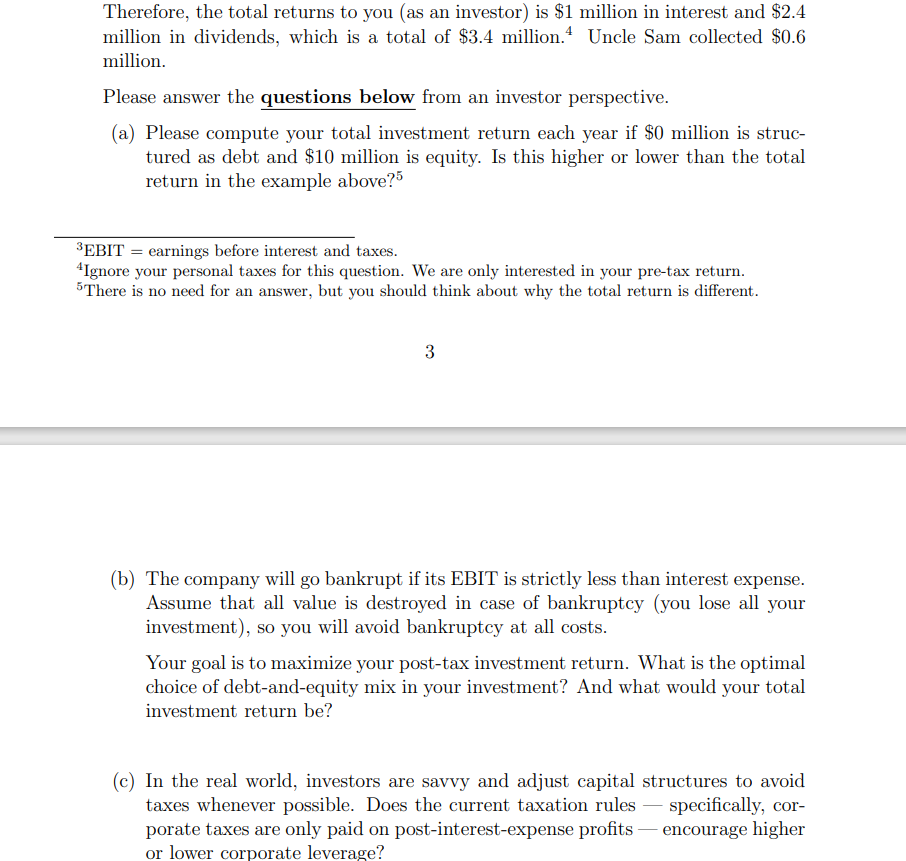

2. Question 2 (taxation and capital structure). This question guides you through thinking about how a company can, through changing its leverage, reduce tax ex- penses and increase returns to investors. The key to this question is realizing that the total payment to investors is the total company profits minus corporate taxes. Set up of the problem. You can invest into a newly established company today which requires $10 million up front investment. The company can generate $X = $4 million operating profit (or also called EBIT3) each year into the indefinite future. Corporate profit tax rate is 20%. You will be the sole investor in this company. However, your investment can be split up into debt and equity. The resulting debt-and-equity-mix is also often called the "capital structure of the company. For simplicity, assume the debt never matures, so you collect interest payment each year as a debt holder. We assume that the annual interest rate on debt is 50%. You also may collect dividend income each year as an equity holder. In this question, we are interested in how total returns to investor (you!) can be increased by changing the capital structure. An example. At this point, you may be confused why calling part of your in- vestment debt or equity makes a difference. Let's walk through an example and compute your post-tax returns. Suppose $2 million of your investment is structured as debt and the remaining $8 million is equity. What happens each year after the company is set up? Well, using the $4 million EBIT, the company will first pay $2 million x50% = $1 million interest to you (as a debt investor). Then, on the remaining $4 $1 = $3 million of EBIT, the company pays corporate taxes of $3 x 20% = $0.6 million and is left with $2.4 million, which will be paid out to you (the equity holder) as dividend. To summarize, below is the income statement of the company: EBIT $4 million - Interest Expense $1 million - Corporate taxes $0.6 million Net income $2.4 million Therefore, the total returns to you (as an investor) is $1 million in interest and $2.4 million in dividends, which is a total of $3.4 million. Uncle Sam collected $0.6 million. Please answer the questions below from an investor perspective. (a) Please compute your total investment return each year if $0 million is struc- tured as debt and $10 million is equity. Is this higher or lower than the total return in the example above?5 = 3EBIT earnings before interest and taxes. *Ignore your personal taxes for this question. We are only interested in your pre-tax return. 5 There is no need for an answer, but you should think about why the total return is different. 3 (b) The company will go bankrupt if its EBIT is strictly less than interest expense. Assume that all value is destroyed in case of bankruptcy (you lose all your investment), so you will avoid bankruptcy at all costs. Your goal is to maximize your post-tax investment return. What is the optimal choice of debt-and-equity mix in your investment? And what would your total investment return be? In the real world, investors are savvy and adjust capital structures to avoid taxes whenever possible. Does the current taxation rules specifically, cor- porate taxes are only paid on post-interest-expense profits encourage higher or lower corporate leverage








